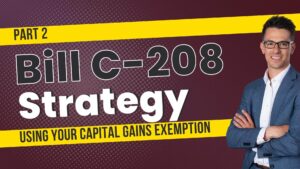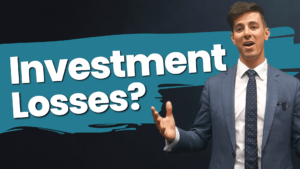[vc_row][vc_column][vc_column_text]
Question 1: We’ve had a very good run in stocks. How will we know when the current market is getting long in the tooth and when it is time to get out and go to cash?
It is natural for investors to worry about market declines as there have been some very large ones in the past. Most of us have discussed this previously as it is a frequently asked question. Let me approach this from a different point of view. Successful investors follow the adage “The trend is your friend.” The long-term trend in equity markets has been up for over a century. So, every time you try to get out, you are going against the long-term trend. Where this comes into play is that when you try to get out of equity markets, you have two major questions to ask, not just one. “When do I get out” and “when do I get back in?”
Over the past century, there have been several bull markets (stocks rise) and several bear markets (stocks fall). Bull markets are generally accompanied by strong economies, during which company earnings grow, and recessions and bear markets occur when earnings fall. Market action seems to be affected by gravitational forces. Bull markets tend to chug along, like a train climbing a hill and then gravity seemingly takes over and stocks suddenly plunge. Much like riding a rollercoaster. Sometimes plunges are based on speculation about factors that may include a wide range of political or economic influences. Sometimes they drop because of computer-trading action, such as programs set that if a stock trades below a certain price = SELL.
I agree that it would be preferable to have less volatile markets, but when traders can track live stock prices, professional traders are going to be constantly trying to outsmart the public and other professionals to generate profits and this leads to volatility and higher short-term risks. Notice that I said short-term risks? This trading doesn’t affect the long-term performance of great companies, like Google or Mastercard. Their stock prices are primarily driven by the firm’s ability to generate profit growth, but speculation can drive prices to artificially higher highs or lower lows and lead professional and private investors to panic and join the selling wave.
The best way to reduce volatility and risk is through diversification and asset allocation. If you have 60% of your portfolio in stocks, your risk and volatility will be greater than if you have 40% in stocks, dependent, or course, that the other asset classes perform as expected. Why do you invest in stocks? The reason should be that they provide higher historical returns than most other asset classes, like bonds or equivalent returns to real estate. Good or great companies are a good hedge against inflation and should generate good returns over time.
Google, Mastercard or companies with good management, strong balance sheets and solid business models are not high risk for going out of business. To use a bond term, these are “Investment Grade” companies compared to companies with a good idea but where the business model is unproven, and profits are yet to be generated. This is more about speculating than investing.
When markets drop and prices get lower, think of this as a buying opportunity for Investment Grade companies rather than fearing that your investments are going to decline significantly or go to zero. Sometimes, companies, like Nortel that are once considered blue chip companies, surprise everybody and go to zero. Although this seldom happens its part of the reason why it’s important to diversify. As the saying goes, don’t put all your eggs in one basket.
Question 2: But sometimes markets do get overvalued or expensive. How do you decide when a stock’s price is too expensive?
There are a number of indicators that we use to judge a company’s valuation. The most common is price/earnings ratio. It is simply calculated by dividing the stock’s price by the earnings per share. Most online programs do the math for you. You can also look at price/sales ratios, price to book or price to cash flow. The general rule of thumb is to buy low ratios, so buy a low PE Ratio, but there are many factors that come into play here. Companies with high earnings growth rates generally have higher PE Ratios. Newer growth companies can have very high PE Ratios because they have yet to achieve good earnings. Our approach is to buy growth at reasonable prices, so we try to find the right balance of high historical earnings growth rates that are expected to continue and buy them at reasonable prices. If we feel valuations in a company are expensive, we look for alternatives with better metrics.
Question 3: You talked about the second decision that an investor needs to make is “When to get back in?” Please explain why this is so difficult.
Ideally, we should always invest in a manner that minimizes emotion, especially fear and greed. When you make the sell decision, which is generally based on fear that financial markets will fall dramatically, you are attempting to predict the future. If you based your decision on facts and numbers, you have a decent base for making predictions. For example, you believe that earnings growth on average is going to decline, three things can happen:
- Stocks fall as you predicted
- Stocks prices remain virtually unchanged
- Stocks rise
For most people, the decision is based on emotion. The investor read something or saw an interview on the financial news. The decision was not based on facts or numbers, just on speculation that something he heard was about to happen. The person who wrote the article is a journalist and his/her job is to write articles that will attract attention and draw readers and in turn, sell advertising.
Many of us started investing when we were relatively young and we didn’t have much money. For Baby Boomers in Canada, we started investing in energy and mining stocks and our goal was to hit a home run when the mining company found gold or our company struck oil. We didn’t have a lot of money and if we lost it all, there would be another day. When we were wrong, we lost money fast and most of these speculative ventures never worked out as planned. Unfortunately, these failed attempts at speculation often influence us when we have large portfolios. Owning Google or Mastercard, as discussed earlier, isn’t really the same as investing in a mining venture.
OK. Back to the question. If you sold without a re-entry strategy, how do you know when to get back in? The best re-entry point is when things look the worst. The best day to buy in recent times was March 23, 2020. COVID fear was at its worst. People were bailing. They couldn’t take the heat and they sold right at the lowest point. Charts looked horrible, the news was awful, and people were getting sick, dying, and panicking about how this new pandemic was going to play out, but then, all of a sudden, the market rebounded strongly. If you saw the market gain 5-10% in a matter of a couple of days, would you think it was time to get back in, or would you think you missed out and will wait for the market to fall back down like it did several times before? And then the market moves up 20% from the lows over the next couple of months, time to get back in now, even though restaurants, travel, and many other businesses are closed? Thing is that there are so many things that are typically driven by emotion that will weigh on when to get out of the market and when to get back in that it usually doesn’t pay off for most investors. Buying and holding and leaving those decisions to a professional that does it for a living usually leads to better success.
Didn’t get the answer to your question? Ask us! Send us an email or contact us at 204-256-5555.[/vc_column_text][/vc_column][/vc_row]











